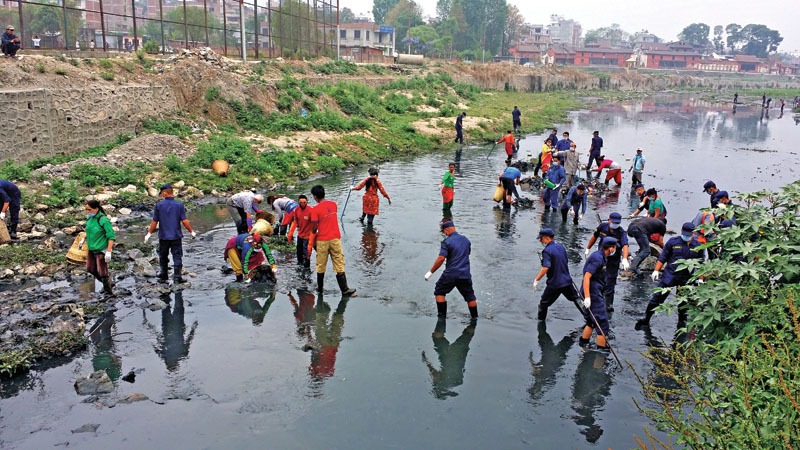Photo : THT
The Bagmati River is a vital part of the national culture of Nepal. The water of the holy river attracts devoted Hindus and Buddhists to purify themselves with its water. The banks of the river and the hills by its side carry significance in the Nepalese Hindu rituals of cremation and the reincarnation cycle. At the same time, the river is of growing economic importance and pivotal for sustainable livelihoods and urbanization for this and future generations.
Rural poverty and water security in Kathmandu are directly related to the Bagmati River’s sustainable use and surroundings. Pollution, flooding and landslides as a result of drainage from the river exacerbate climate change risk. In 2020 The Asian Development Bank (ADB) launched ‘The Bagmati River Basin Youth Program’ to engage local youth in environmental sustainability. As part of a bigger program, the youth engagement component focused on two training initiatives. A comprehensive training program on the Sustainable Development Goals, engaging around 200 youth participants, and a webinar session was reaching over 1700 youth participants as part of the World’s Largest Lesson (WLL) initiative.
Over the period October 2019 – January 2021, Rapid Asia carried out a pre-evaluation and impact evaluation of the Bagmati River Basin Youth Program, to establish whether the program had a beneficial impact on the participants and if the training translated into meaningful youth projects on the ground. The evaluation measured how youth behaviour changed due to the program, using the KAP (Knowledge, Attitude, Practice) Score model.[1]
Would investment in youth training result in youth-led project initiatives? And does this type of activity contribute to an increase in engagement with sustainability more broadly?
It was found that youth, with prior experience with volunteering or environmental initiatives, had a better grasp of the Bagmati River Basin program’s issues. They appreciated the training more and got more out of it, in particular youth who participated in the more comprehensive SDG training. Prior experience was found to be directly related to the conversion of training participation into self-driven action on the ground – developing initiatives on their own. Another important factor was the level of education, and university students seemed to be better positioned to take action and lead initiatives.
The SDG targets and sustainability concept were issues that many of the youth participants didn’t fully understand, even after the training. However, a larger proportion of the more comprehensive SDG training participants could appreciate and understand the SDG’s underlying concepts. A clear benefit of the WILL is that it’s easier to scale up to reach a wider audience. Though, as a stand-alone initiative its impact on youth engagement is low, especially for participants without prior experience.
The evaluation shows that the longer and shorter training components complimented each other and could both be useful in future youth engagement initiatives. The more extended SDG training was more suited to developing youth advocates, but the shorter training provided a more significant scale. At the end of the programme, over 300 youth participants had engaged in activities such as waste management, tree planting, clean up rallys and recycling intitiaves to help save the Bagmati River Basin. Around half of them had become youth organizers who had undertaken and led their initiatives, and the other half were engaged in activities organized by others.
About the authors: Daniel Lindgren is the Founder of Rapid Asia Co., Ltd., a management consultancy firm based in Bangkok that specializes in evaluations for programs, projects, social marketing campaigns and other social development initiatives. Nadine Spalburg is an independent consultant working with Rapid Asia as a member of their expert panel of consultants.
[1] https://www.tandfonline.com/doi/abs/10.1080/09614524.2019.1569590?journalCode=cdip20

